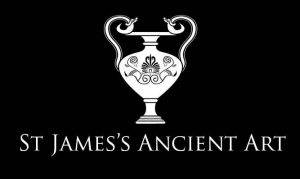The goddess Bastet was considered to be the daughter of Ra, the sun god, and was originally shown with the features of a lion up until about 1000 BC when she started being portrayed as a cat or human with a cat head. The maternal, protective and hunting characteristics of the cat were the most obvious in Bastet and she is seen as a protector of pregnant women and young children. Amulets in the shape of Bastet would have been worn particularly by women not only to place themselves under the patronage of the goddess, but also in the hope that the wearer might be endowed with the goddess’ fecundity.
To discover more about amulets in the Ancient Egyptian world, please visit our relevant post: Amulets in Ancient Egypt.






